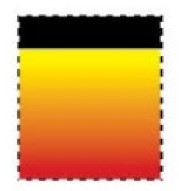On April 8, 2020, the Federal Circuit Court of Appeals (the Federal Circuit), in In Re Forney Industries Inc reversed the Trademark Trial and Appeal Board (the Board) and held that multicolor designs may be inherently distinctive when used on product packaging. The court further held that multicolor designs need not be used within a well-defined shape or border to be eligible for protection. As a result, such designs may be registered without proof of acquired distinctiveness.
Previously, in Qualitex Co. v. Jacobson Prod. Co., 514 U.S. 159 (1995), the Supreme Court held that color alone may be protected as a trademark when that color has attained “secondary meaning” and, therefore, identifies and distinguishes a particular brand (and, thus, indicates its source). Examples of brands that are associated with specific colors include Tiffany’s blue or Christian Louboutin’s red soles. The Federal Circuit’s Forney decision goes one step further: multicolor designs used on packaging do not need to wait until they achieve secondary meaning (i.e., acquired distinctiveness).
Forney Industries, Inc. (Forney) sells welding products in packaging that contains a color combination of red, yellow, and black. In 2014, Forney applied to register this color scheme (pictured below) as a trademark for packaging for various welding goods. Forney sought to register the mark without showing acquired distinctiveness (i.e., secondary meaning).

The United States Patent and Trademark Office (USPTO) rejected Forney’s application, finding that the mark was not inherently distinctive and noting that such marks are registrable only with sufficient proof of acquired distinctiveness. Forney appealed the USPTO’s decision to the Board and argued that its proposed mark should be treated as product packaging claiming multiple colors. It further argued that its proposed mark is product packaging trade dress that may be inherently distinctive and, therefore, registrable without proof of acquired distinctiveness.
The Board affirmed the USPTO’s decision, treating the proposed mark as a color mark consisting of multiple colors applied to product packaging. The Board relied on the Supreme Court’s decisions in Two Pesos, Inc. v. Taco Cabana, Inc., 505 U.S. 763 (1992), Qualitex Co. v. Jacobson Prod. Co., 514 U.S. 159 (1995), and Wal-Mart Stores, Inc. v. Samara Bros., 529 U.S. 205 (2000) and observed that, when assessing marks consisting of color, there is no distinction between colors applied to products and colors applied to product packaging. The Board also found that there is no legal distinction between a mark consisting of a single color and one, such as Forney’s, consisting of multiple colors without additional elements, e.g., shapes or designs. The Board further held that a color mark consisting of color applied to product packaging cannot be inherently distinctive in the absence of an association with a well-defined peripheral shape or border. Based on the foregoing, the Board found that Forney’s mark was not inherently distinctive.
The Federal Circuit reversed. It held that color marks can be inherently distinctive when used on product packaging, depending upon the character of the color design. The Federal Circuit, relying on Wal-Mart, explained that inherent distinctiveness turns on whether consumers would be predisposed to “equate the [color] feature with the source.” It further explained that although color is usually perceived as ornamentation, a distinct color-based product packaging can indicate the source of the goods to a consumer, and, therefore, can be inherently distinctive.
The Federal Circuit reasoned that, while neither the Federal Circuit nor the Supreme Court had previously addressed whether a multi-color mark applied to product packaging can be inherently distinctive, the Supreme Court has provided valuable guidance on the issue. For example, in Two Pesos, the Supreme Court held that inherently distinctive trade dress is entitled to protection without a showing of secondary meaning; in Qualitex, the Supreme Court explained that there is no rule absolutely barring the use of color alone as a trade dress and there is no obvious theoretical objection to the use of color alone as a trademark where that color has attained “secondary meaning” and therefore identifies and distinguishes a particular brand; and in Wal-Mart, the Supreme Court noted, the attribution of inherent distinctiveness to certain categories of product packaging derives from the fact that the very purpose of encasing a product in a distinctive packaging is most often to identify the source of the product.
Based on these guideposts, the Federal Circuit concluded that Supreme Court precedent does not support the Board’s conclusion that a proposed product packaging mark consisting of multiple colors is not capable of being inherently distinctive. The Federal Circuit explained that, as a source indicator, Forney’s multi-color product packaging mark falls firmly within the category of marks the Supreme Court described as potential source identifiers. It explained that it is possible that Forney’s mark can be perceived by consumers to suggest the source of the goods in that type of packaging. As a result, rather than holding that colors alone cannot be inherently distinctive, the Board should have considered whether Forney’s mark satisfies the Federal Circuit’s criteria for inherent distinctiveness under Seabrook Foods, Inc. v. Bar-Well Foods Ltd., 568 F.2d 1342 (C.C.P.A. 1977).
The Federal Circuit also rejected the Board’s alternative finding that a color may only be inherently distinctive when used in conjunction with a distinctive peripheral shape or border. The Federal Circuit explained the proper inquiry is whether the trade dress makes such an impression on consumers that they will perceive that the trade dress is associated with a particular source, regardless of whether a multicolor mark is used in a particular shape or peripheral border.
As a result, the Court remanded to the Board to consider, whether, for the uses proposed, Forney’s proposed mark is inherently distinctive under the Seabrook factors, considering the impression created by an overall view of the elements claimed.
The Federal Circuit’s ruling in Forney is an important decision of first impression. It should allow creative graphic use of multi-color packaging marks.